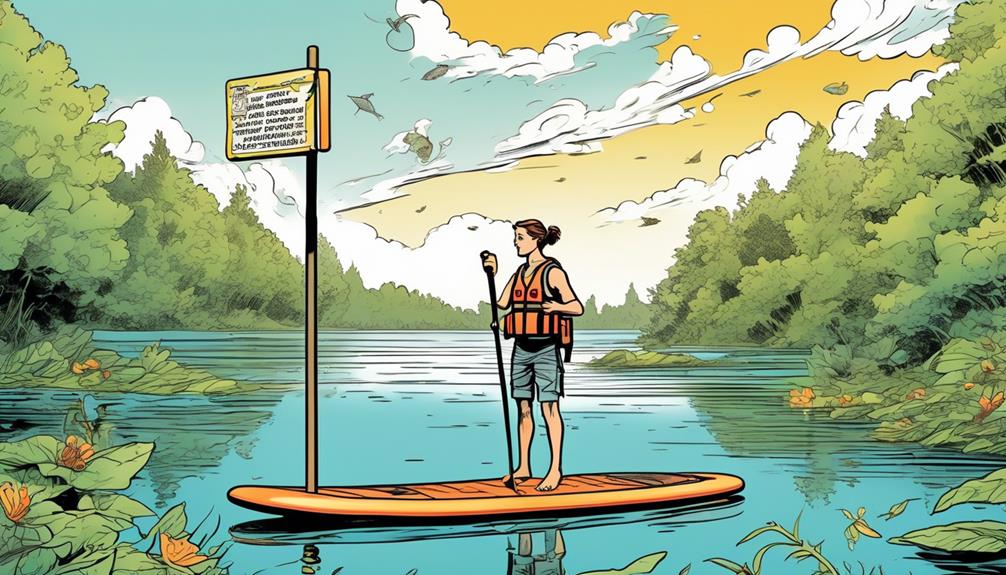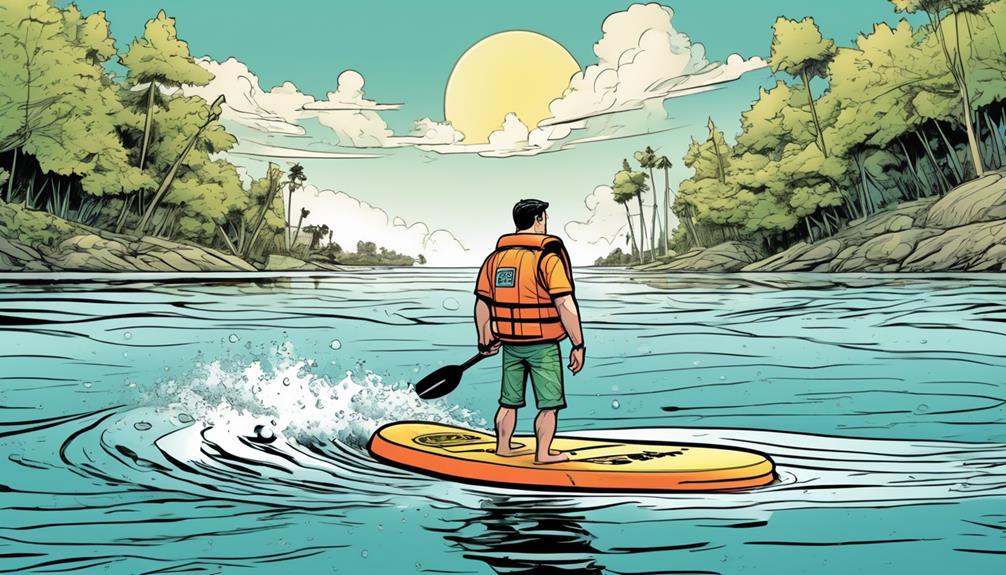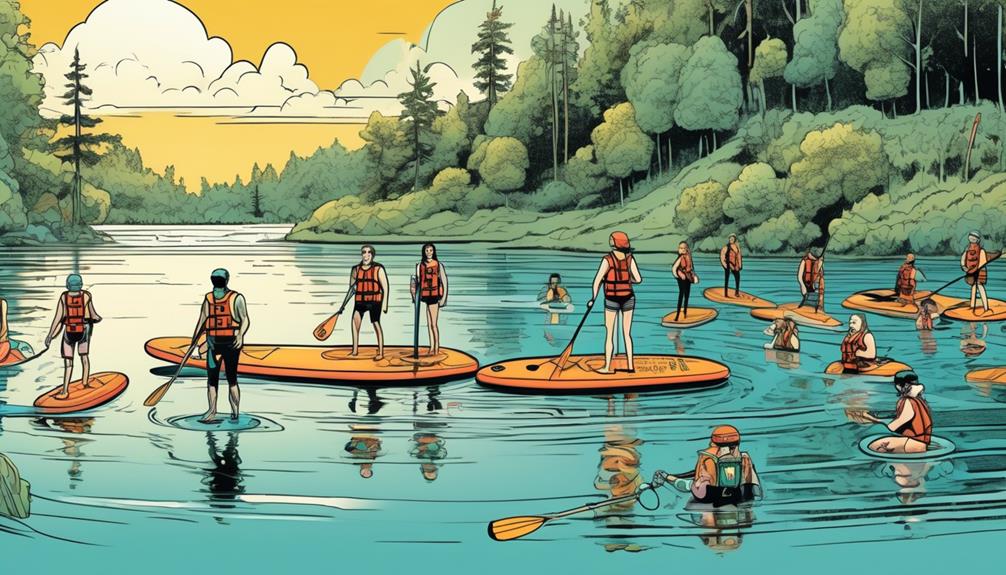So, you're probably wondering if slapping on a life jacket while cruising on your inflatable paddle board is really necessary, right? Well, let me break it down for you in a way that's not just me rambling on.
From my own spills and thrills on various water bodies, and digging into the nitty-gritty, it's clear that this isn't a simple yes-or-no answer. It boils down to local laws, the chop of the water, and how seriously you take your own skin in the game.
Here's the deal: based on data and real-life stories, safety regs can vary wildly from one place to another. I've seen areas where you're practically given a high-five for wearing a life jacket, and others where no one bats an eyelid if you don't. But let's be real, personal safety? That's on you. And trust me, the data doesn't lie—wearing a life jacket can be a game-changer in unexpected situations.
So, stick with me as we sift through this. I'll throw at you data-driven insights and real-world examples that'll make you reconsider your stance on life jackets. Because, at the end of the day, it's all about keeping you safe while ensuring you're not missing out on the fun.
Key Takeaways
- Local life jacket regulations vary and it's important to stay updated on them.
- Assessing water conditions, including weather, temperature, currents, and obstacles, is crucial for safety.
- Wearing a life jacket and using a leash are essential personal safety practices.
- Experienced paddleboarders emphasize the importance of being prepared and prioritizing safety.
Understanding Local Regulations

Before you even think about launching your inflatable stand-up paddleboard, let me tell you, understanding local life jacket regulations is key. Trust me, I've been there, and the rules are as varied as the fish in the sea.
In some spots, it's mandatory for everyone to wear a life jacket, no exceptions. Meanwhile, in other places, it's like the Wild West, with only kids or certain age groups needing to strap in.
Let's talk real talk with data. Did you know that according to the U.S. Coast Guard's 2020 Recreational Boating Statistics, where life jackets were required, they were credited with saving hundreds of lives? Now, let's zoom in on the water type. If you're paddling on a serene lake, you might feel over-prepared in a life jacket. However, hit the coastal waters or a river with a bit more spirit, and that life jacket could be your best friend. It's not about overkill; it's about being prepared.
From personal experience, I can't stress enough how vital it's to stay on top of these regulations. They're as dynamic as the weather, changing with new safety data or after unfortunate incidents. Just last summer, a new rule popped up at my favorite paddleboarding spot, requiring all paddleboarders to wear life jackets after a couple of close calls were reported.
Now, you might be thinking, 'But I'm a good swimmer!' or 'It's just a calm lake.' I've heard it all. But consider this: accidents don't send calendar invites. They happen fast, and often, it's the unexpected that catches us off-guard.
So, how do you stay ahead of the game and ensure your safety, as well as compliance? First, check the local regulations before you go. A quick Google search or a call to the local marina can save you a lot of headaches. Second, invest in a comfortable, Coast Guard-approved life jacket. The tech in these things has come a long way – they're not the bulky orange monstrosities you remember. Many are designed specifically for paddle sports, meaning you'll barely notice it's there.
But why should you care? Because, at the end of the day, it's not just about avoiding fines or being told to pack up and go home by the local authorities. It's about making sure you can enjoy many more days on the water, safely. You owe it to yourself and the people waiting for you onshore.
Assessing Water Conditions
Before you hit the water with your paddleboard, you've got to understand the environment you're stepping into. Trust me, I've seen enough sunny forecasts turn into thunderstorm nightmares to know that weather checks are non-negotiable. A quick glance at a reliable weather app can save you from what could potentially be a life-threatening situation.
But, let's break it down a bit more. You might think, 'It's sunny and warm, perfect paddleboarding weather, right?' Not so fast. If the water temperature is low, you're looking at a risk of hypothermia. Surprising, I know, especially when you're feeling toasty on the beach. But here's the deal: water conducts heat away from your body way faster than air. So, even if the air feels like a warm hug, the water can be a cold shock. There are stories out there of folks who thought they'd be fine, only to find themselves struggling. Always check the water temp and know the signs of hypothermia – it could be a game-changer.
Now, onto currents and tides. Ever tried paddling back to shore, feeling like you're on a treadmill? That's the tide working against you. And currents? They're like invisible roads in the water that can take you places you didn't plan to go. I use specific apps that track these, making my life (and return trip) a heck of a lot easier. This isn't just me being overly cautious; it's about making smart, informed decisions. There's plenty of data out there showing how a good day can turn bad when you underestimate these forces.
Finally, let's talk about obstacles. Rocks, boat traffic, restricted zones – they're not just minor inconveniences. They're potential hazards. Planning your route to avoid these isn't just smart; it's essential. I've read about too many close calls that could have been avoided with a bit of planning.
Personal Safety Practices

So, you're into paddleboarding, right? Let's talk about keeping it safe and fun, because believe me, ending up in the water unexpectedly is no joke.
Wearing a life jacket isn't just ticking a box for safety compliance; it's literally your lifeline. Data shows that the majority of water sport accidents could have been mitigated if the person was wearing a life jacket. It's not about if you're a newbie or a pro – water doesn't discriminate, and accidents happen to the best of us.
Now, let's chat about that leash for your inflatable stand-up paddleboard (SUP). Ever thought about why it's so important? Here's the thing: if you fall off, that leash is what keeps your board from becoming a tiny speck on the horizon. It's not just about making life easier for you to get back on your board; it's also a critical safety tool that prevents you from getting separated from your board in strong currents or winds.
Checking the weather conditions before you hit the water is another non-negotiable. You might think, 'I've paddled in all sorts of weather, I can handle it,' but weather can change at the drop of a hat, turning a chill paddle session into a struggle against the elements. There's plenty of data out there showing how quickly conditions can change, and being caught off guard is a risk you don't want to take.
So, why am I hammering home these points? Because I care about your safety, and I know you do too. It's easy to get complacent, especially if you've been paddleboarding for a while and haven't run into any issues. But the data doesn't lie – wearing a life jacket, using your leash, and checking the weather are simple practices that have a huge impact on your safety.
You might be thinking, 'But I'm careful, I don't need to worry about this stuff.' To that, I say: why take the risk? It's not about living in fear; it's about being smart and prepared. Next time you're planning a paddleboarding session, remember these points. They might just save your life or make your experience a whole lot more enjoyable. Stay safe out there, and happy paddling!
Insights From Experienced Paddleboarders
Let's talk paddleboarding safety, and trust me, this is a topic you'll want to pay attention to. I've spent years on the water, and if there's one thing I've learned, it's that being prepared can literally save your life. So, let's get right into it, focusing on what really matters to you.
First off, always check weather conditions and water currents before you even think about hitting the water. I've seen too many people get caught off guard by a sudden storm or unexpectedly strong currents. According to the National Weather Service, over 70% of water-related accidents are due to sudden weather changes. That's a number you can't ignore. By taking a few minutes to check the forecast, you're not just being cautious; you're being smart.
Next, know your paddleboarding area like the back of your hand. I learned this the hard way when I found myself stuck near a hidden water outlet that wasn't visible until it was almost too late. The U.S. Coast Guard reports that most accidents happen within a few miles of the shore, often because paddleboarders aren't familiar with local hazards. So do your homework. It's worth it.
Practicing self-rescue techniques is another game-changer. Did you know that the ability to get back on your board in deep water can increase your survival rate by over 50% in case of an accident? That's according to a study by the Paddleboarding Safety Council. It's one of those skills you hope you'll never need, but you'll be grateful for if you do.
Finally, using a leash might seem like Paddleboarding 101, but you'd be surprised how many people skip it. The leash is your lifeline, keeping your board attached to you if you fall off. A report from the International Paddleboarding Organization found that boards can drift away at speeds of up to 5 miles per hour in moderate currents. Without a leash, you could be left stranded.
Now, I know some of you might be thinking, 'But I'm careful. I don't need to worry about all this.' Let me be clear: accidents on the water can happen to anyone, regardless of experience. I've seen it firsthand, and I've heard too many stories of close calls and tragic accidents that could have been avoided with proper preparation.

